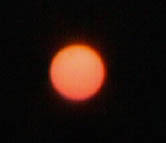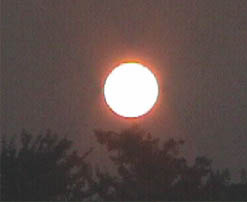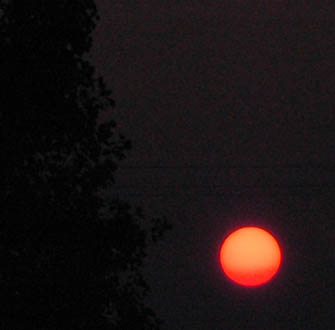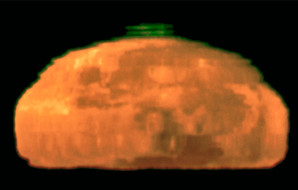Red Sunset
Sunsets are reddened because for sun positions which are very low or just below the horizon, the light passing at grazing incidence upon the earth must pass through a greater thickness of air than when it is overhead. Just before the sun disappears from view, its actual position is about a diameter below the horizon, the light having been bent by atmospheric refraction to reach our eyes. Since short wavelengths are more efficiently scattered by Rayleigh scattering, more of them are scattered out of the beam of sunlight before it reaches you. Aerosols and particulate matter contribute to the scattering of blue out of the beam, so brilliant reds are seen when there are many airborne particles, as after volcanic eruptions.

The equivalent phenomenon can be seen at sunrise
 | This shows an early morning sun with the exposure dark enough so that the light from the Sun does not saturate the CCD detector. The color is indeed very red. |
 | When an attempt was made to lighten the image so that the surroundings could be seen, the light from the Sun saturated the medium and appeared white. |
 | This image of the red morning sun was shot about 7:30 AM near Atlanta. A small amount of morning fog enhanced the red by Rayleigh scattering, which would scatter more blue light out of the sight line. Successive exposures at about 1 stop difference were taken and the sun from the darker one transferred over the sun image in the lighter one. |
The redness of the sun is about as it appeared to the eye, but the remainder of the sky is much darker than it appeared to the eye, pointing to the remarkable contrast handling ability of human vision.
Atmospheric optics concepts
| HyperPhysics***** Light and Vision | R Nave |



